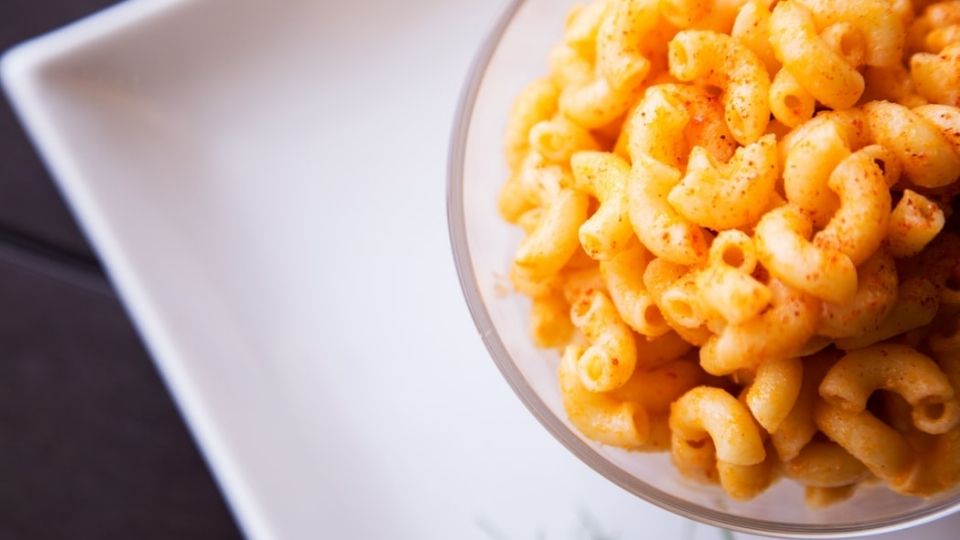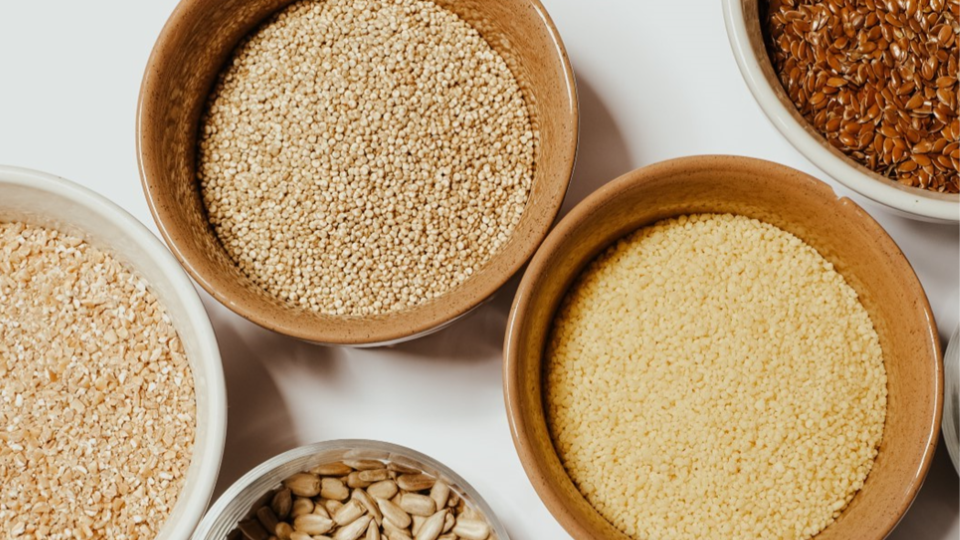Hidden Vegetables

It can be difficult to get your children to eat enough vegetables, especially if they are picky eaters. Hiding vegetables in other dishes is one way to avoid any disliked flavors or textures (Blatt, 2011). However, there are pros and cons to taking this approach that you need to consider:
Hiding vegetables may increase the intake and variety of vegetables in the diet while decreasing calories (Blatt, 2011; Spill, 2011). However, there are several drawbacks to consider. First, because children are not exposed to the taste of the vegetable they may not learn to like the taste (Maier, 2007). Secondly, many hidden vegetable recipes only contain a small amount of vegetables, so they don’t increase intake significantly (Blatt, 2011) Third, it is difficult to cook with your children and use hidden vegetables (Pescud, 2014). This is a problem because we know that when children are involved in cooking they are much more likely to eat the foods prepared. Finally, children (and adults!) may feel tricked if they learn you are hiding vegetables in their food. This may harm the trust in your relationship and may even cause them to dislike the vegetable even more (Pescud, 2014; Ellison, 2015).
Benefits and Drawbacks of Hiding Vegetables

Benefits of Hiding Vegetables:
- Increased intake of vegetables in diet (Spill, 2011)
- Better variety of vegetables in diet (Spill, 2011)
- Decreased calories (Blatt, 2011; Spill, 2011)
Drawbacks of Hiding Vegetables:
- Children are not exposed to the taste of the vegetable, so they may not learn to like it (Maier, 2007).
- Many hidden vegetable recipes only include a small amount of vegetables (Blatt, 2011)
- It is difficult to cook with your children and use hidden vegetables (Pescud, 2014)
- Children may feel tricked if they learn what you are doing, harming the trust in your relationship. It may even cause the children to dislike the vegetable in question even more (Pescud, 2014; Elliston, 2015)!
If you choose to cook with hidden vegetables, it is very important to also serve vegetables that are not hidden as a part of meals and snacks (Spill, 2011) This will help your child learn to like the taste of vegetables, and will teach your child that vegetables are an important part of every meal (Maier, 2007). It will also give your child a chance to learn by watching you—so make sure you eat the vegetables you serve (Schwartz, 2011).
Hidden vegetable recipes often only include a small amount of vegetables. It is important to realize how many vegetables are in a serving of the recipe, and decide for yourself if it is worth the extra work. To figure out the amount of vegetables your child would get from a recipe, divide the total cups of vegetables used in the recipe by the number of servings. For example, in the chocolate muffin recipe on the next page, we use 2 cups of beet puree, and if your child eats three mini cupcakes, they still don’t get anywhere close to a serving of vegetables. The best way to cook with hidden vegetables is to switch out a food item that has a lot of calories with finely grated or pureed vegetables. This will not only add additional vegetables to the diet but will also reduce the total number of calories in the dish (Spill, 2011). It is easiest to include vegetable purees in mixed dishes like casseroles or soups, in smoothies, and in baked dishes like cakes, brownies, sweet breads, or muffins.
To make vegetable purees, first cook the vegetables and then use a blender or a food processor to puree them. To make vegetable purees, first cook the vegetables and then use a blender or a food processor to puree them. (Here are two examples used in the recipes on the next page.) You can save time by starting with canned vegetables or buying pureed baby food.
| Beet Puree | Butternut Squash | |
|---|---|---|
| Prep | Leave whole (trim any stems) and unpeeled | Cut off stem and in half lengthwise, scrape out seeds |
| Cooking | Wrap in foil and roast at 400°F for 1 hour | Add ½ cup water to pan and place squash in pan and cover with foil. Steam-bake at 350°F for 1 hour. |
| Noodles of Puree | Peel and blend for 2 minutes | Scoop flesh out and blend for 2 minutes |
| Recipe Title | Chocolate Cake | Macaroni and Cheese |
To learn more about getting kids to eat their veggies, please see our fact sheet, “Helping Your Child Love Vegetables.”
Hidden Vegetable Recipes
Feel free to try these recipes with other vegetables you like. Don’t be afraid to experiment and have fun in the kitchen. Who knows you may create something you and your family will love to eat!
Baked Butternut Squash Macaroni and Cheese
(Inspired by Courtney Lopez at superhealthykids.com)
Ingredients
- 1 pound –butternut squash
- 1/8 medium –onion
- ½ tablespoon –olive oil
- 8 ounce –Macaroni pasta, dry
- 2-tablespoon olive oil
- 1-tablespoon flour (whole wheat or all-purpose)
- ½ cup Milk (1% or Skim Milk)
- ¾ cup – Cheddar cheese, shredded
- ¼ cup – Parmesan cheese, grated
- 1/8 cup –Panko (Japanese bread crumbs)
Directions
- Chop onion.
- Refer to table above on how to prepare squash puree, or use 1 ½ cups butternut squash baby food.
- While butternut squash is cooking, sauté onion in olive oil until soft and slightly golden.
- Cook pasta according to package directions. Drain.
- Once vegetables are done, drain and allow to cool slightly. Add to a blender and puree.
- In a medium saucepan heat oil and mix in flour, try to prevent any lumps. Add in milk slowly with continues mixing.
- Add in ½ cup cheddar cheese and ½ of Parmesan cheese to sauce. Continue to stir to melt cheese. Take butternut squash puree and pour into cheese sauce.
- Mix together the macaroni and butternut squash cheese sauce.
- Place into an oven-safe dish and top with remaining cheeses and Panko. Bake for 10 minutes or until bubbly and slightly browned. Serving Size: 4 (1 cup portions) Amount of vegetable per serving: 3/8 cup
Mini Chocolate Muffins
(Adapted from Simply in Season)
Ingredients
- 2 15oz cans sliced beets (or 2 cups of beet puree)
- ½ cup sugar
- ½ cup oil
- ½ cup low-fat yogurt
- 3 large eggs
- 1 ½ tsp. vanilla
- 2 ½ cups whole wheat flour
- 1 ½ tsp. baking soda
- ½ tsp. salt
- 1 tsp. cinnamon
- ½ cup cocoa powder
- 1 cup semi-sweet chocolate chips
Directions
- Preheat oven to 350°F
- Drain beets and puree in food processor until smooth.
- Combine beats with sugar, oil, yogurt and 3 eggs. Mix well.
- Mix together dry ingredients in a separate bowl: flour, baking soda, salt, cinnamon, and cocoa.
- Combine dry and wet ingredients and mix until no dry patches remain.
- Spoon batter into cupcake tin, and top with chocolate chips.
- Bake for 10 minutes or until a toothpick inserted comes out clean. Makes about 96 mini-cupcakes
*Important Note: These cupcakes do not contain a significant amount of vegetables!
Berry Green Smoothie
(Adapted from Chungah at damdelicious.net)
Ingredients
- 2 Cups frozen spinach leaves
- 1 Cup frozen blueberries
- 1 ripe banana
- 2 Cups milk
- 2 tablespoons lemon juice
- Optional—1 or 2 tablespoons sweetener (honey, jam, etc.)
Directions
- Combine spinach, blueberries, raspberries, banana, milk, lemon juice and ice in blender until smooth.
Serves 2
Amount of vegetable per serving: 1 cup
References
- Blatt, A. D., Roe, L. S., & Rolls, B. J. (2011). Hidden vegetables: An effective strategy to reduce energy intake and increase vegetable intake in adults. The American Journal of Clinical Nutrition, 93(4), 756–763. doi:10.3945/ajcn.110.009332
- Elliston, L. (2015). Childcare Centres - Developing Healthy Eating Habits. Nutridate, 26(4), 5-7.
- Maier, A., Chabanet, C., Schaal, B., Issanchou, S., & Leathwood, P. (2007). Effects of repeated exposure on acceptance of initially disliked vegetables in 7-month old infants. Food Quality And Preference, 18(8), 1023-1032. doi:10.1016/j.foodqual.2007.04.005
- Pescud, M. & Pettigrew S. (2014) Parents’ experiences with hiding vegetables as a strategy for improving children's diets. British Food Journal, 116(12), 1853-1863. doi: 0.1108/BFJ-06-2012-0155
- Schwartz, C., Scholtens, P. J., Lalanne, A., Weenen, H., & Nicklaus, S. (2011). Development of healthy eating habits early in life. Review of recent evidence and selected guidelines. Appetite, 57(3), 796-807. doi:10.1016/j.appet.2011.05.316
- Spill, M. K., Birch, L. L., Roe, L. S., & Rolls, B. J. (2011). Hiding vegetables to reduce energy density: An effective strategy to increase children’s vegetable intake and reduce energy intake. The American Journal of Clinical Nutrition, 94(3), 735– 741. doi:10.3945/ajcn.111.0
Authors
Chelsea Feller Dietetics Student; Carrie Durward PhD, RD
Related Nutrition Articles






